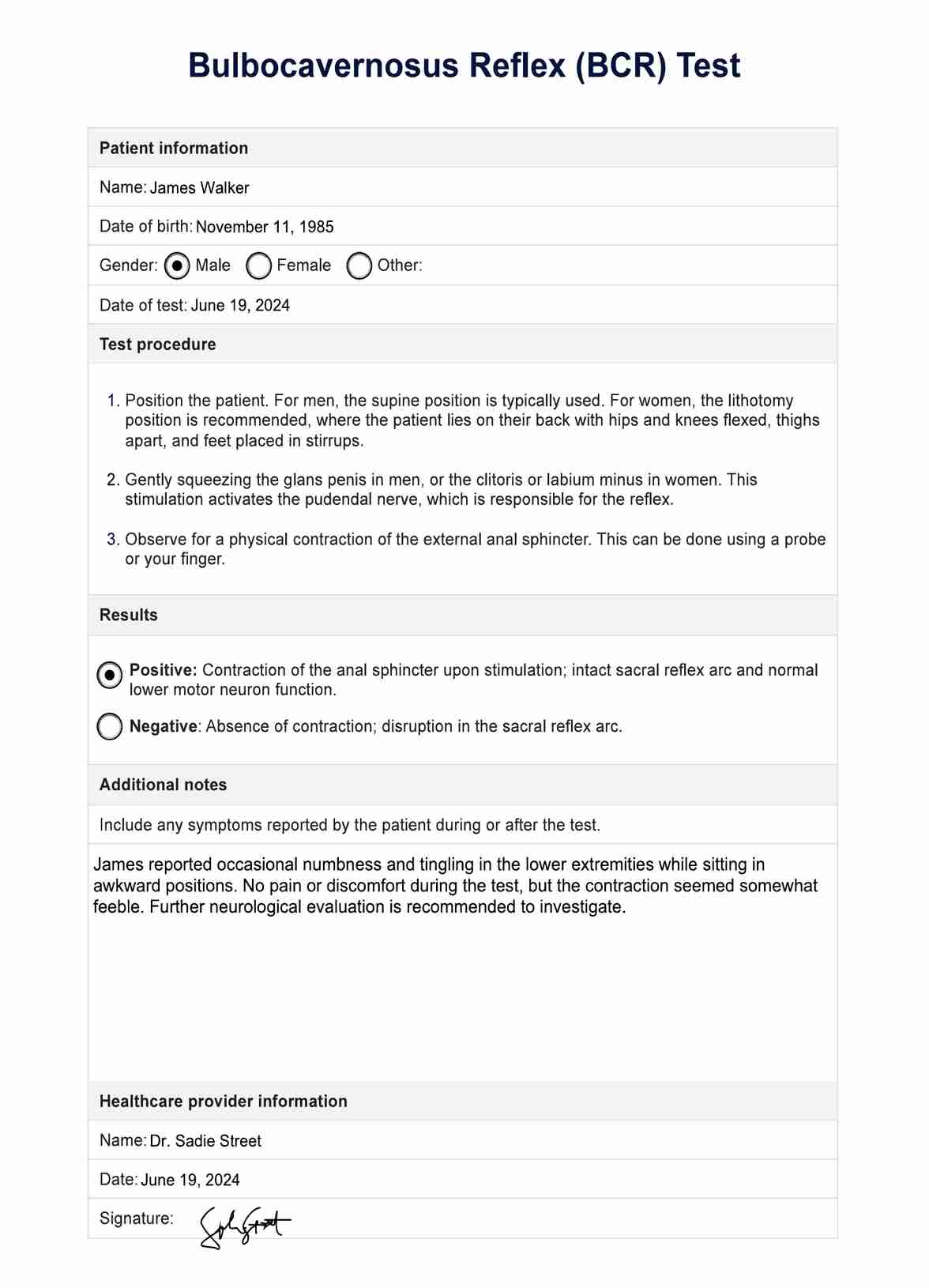The primary purpose of the BCR test is to assess the function of the sacral spinal cord segments (S2-S4). It helps determine the integrity of the neural pathways involved in sacral reflexes, which is crucial for diagnosing spinal cord injuries.

Bulbocavernosus Reflex (BCR) Test
Discover how the Bulbocavernosus Reflex (BCR) Test diagnoses spinal cord injuries (SCI). Enhance SCI testing with our comprehensive guide and template.
Bulbocavernosus Reflex (BCR) Test Template
Commonly asked questions
Spinal shock can last from several hours to weeks, depending on the severity of the spinal cord injury. During this period, spinal cord injury patients may experience a loss of reflexes, motor function, and sensory function below the level of the injury.
Yes, the BCR test can evaluate other conditions affecting the sacral spinal cord segments, such as certain neurological disorders or trauma to the pelvic region. It provides valuable information about the patient's neurological status.
EHR and practice management software
Get started for free
*No credit card required
Free
$0/usd
Unlimited clients
Telehealth
1GB of storage
Client portal text
Automated billing and online payments











